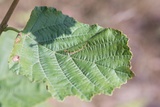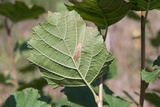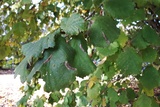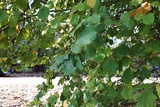Phyllonorycter nicellii (Stainton, 1851) Species
Last modified: Dec. 10, 2025, 5:40 p.m.
A widespread and common species throughout Belgium.
Details
- Classification
- Family: Gracillariidae > Subfamily: Lithocolletinae > Genus: Phyllonorycter > Species: Phyllonorycter nicellii
- Vernacular names
- Hazelaarvouwmot (NL), Red hazel midget (EN), Gebänderte Haselblatt-Miniermotte (DE)
- First mention in Belgium
- De Fré Ch. 1858. Catalogue des Microlépidoptères de la Belgique. — Annales de la Société entomologique belge 2: 45–162. On page 157. view page
- Status
-
Native
Distribution
Imago
Head ochreous brown; forewing ground colour golden brown; white pattern consisting of some white scales at the base of the wing; two transversal lines, edged basally with a thin row of dark brown scales; one to three, small costal and one to two, small dorsal striae; a patch of dark brown scales in the apical area.
Museum specimens
No pictures yet!Specimens in nature
No pictures yet!Caterpillar
Whitish green with dark brown to blackish head capsule.
Mine
At first a rather small, rectangular tentiform mine on the underside of a leaf, later growing into a long mine, situated between two secondary veins. On the underside a conspicuous central fold, and adjacent to that a series of small, inconspicuous folds. The mine is strongly contorted and the central part remains green for a long period with the two ends white with brown spots. The dark frass is concentrated in one corner of the mine.
See also gracillariidae.net and bladmineerders.be.
Cocoon/pupa
An oval, white cocoon attached to both the roof and the bottom of the mine. Pupa light brown.
Bionomics
The species hibernates in the pupal stage. After emergence of the adult, the pupal skin protrudes through the mine.
Flight periods
Two generations a year in April till early June and July–August.





